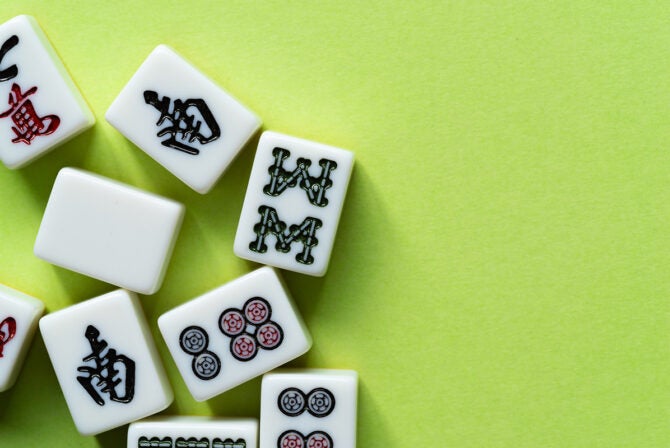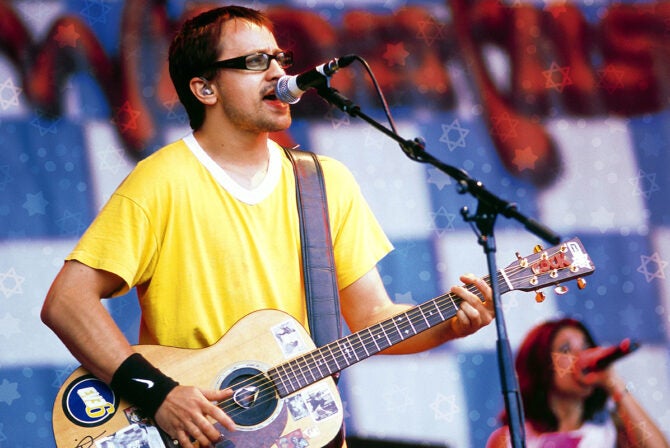What do you know about canasta? I learned about the popular Rummy-like card game, whose name means “basket,” through the classic Jewish American show “The Nanny,” in which Sylvia, Fran’s mother, plays it — and even reveals that she’s amassed quite a full “pushke” of winnings.
If you grew up Jewish in the U.S., it’s likely you know someone, of (ahem) a certain age group who plays canasta. While the game’s roots are in Uruguay, it’s been popular in the U.S. since the ’50s.
“Ralph Michaels, a Chicago businessman, brought canasta to the United States. Canasta exploded into prominence when it reached New York and was the latest fad to blaze across the country, quickly surpassing Contract Bridge, the most popular card game played in the U.S. at that time,” gaming mavens Dara Collins and Donna Miller-Small told Kveller.
Similar to mah jongg, canasta is especially very popular among Jewish women, according to Annelise Heinz’s “Mahjong: A Chinese Game and the Making of Modern American Culture” — and became a staple among Jewish social groups and in Jewish community centers.
Now, Collins and Miller-Small are on a mission to get more and more people into canasta. It’s not Collins’ first rodeo getting people acquainted with a classic game beloved by fellow Jews: Collins and Donna Kassman co-own Modern Mahjong, where you can get their trademarked mahjong dice along with other gaming merch, and find a community to play the iconic tile game (though they do not provide the traditional mah jongg snacks!).
Collins and Miller-Small have just published “Modern American Canasta: The Complete Guide,” which will help you get into the game Sylvia Fine loves so much. While there are plenty of videos on how to play canasta and books on different versions of the game, Collins and Miller-Small say theirs is “the only complete [guide to] Modern American Canasta” — the version of the game that’s experiencing a resurgence right now. It provides “an instruction guide to learn the game, clear illustrations and creative graphics, widely accepted rules and 14 chapters on strategy.”
The game, which is played by four people in two pairs of partners, necessitates much less buy-in than mahj, which requires specialty tiles — all you really need is two decks of cards with jokers, a piece of paper and a pen. You might want to invest in a rotating card tray and a card holder, as well, but it’s a not a necessity for beginners.
The goal of canasta is to reach 8500 points by forming melds and canastas — “A Canasta consists of a meld of seven of the same number or picture cards, with or without Wild Cards, and regardless of the suits (Hearts, Diamonds, Spades and Clubs),” Collins and Miller explain.
“While trying to make as many canastas as possible, the teams must also play defensively by preventing their opponents from gaining points. Typically, a game involves several rounds of play, and scoring accumulates from each round,” they continue.
Miller-Small, a Jewish grandma, is a veteran canasta and mah jongg instructor in her home state of Long Island, with over 15 years of experience. She tells Kveller she “got the ‘card’ gene” from her parents, “both Life Master Bridge Players,” and she fondly remembers “endless hours of card-playing, including canasta,” with her family.
Dara is more of a newcomer to the card game: Her mother taught her, along with her husband David, to play it, and they ended up playing it online as COVID-19 made it impossible to play the game in person. She used Donna and her mom as a sort of “canasta hotline” to help her master the game.
This past year, the two women realized that there was a real “need for a comprehensive guide to learn and improve your game” — and that’s how their book came to be.
The two believe that the partnership game is experiencing a resurgence because more and more people find themselves wanting to connect and socialize without the interruption of electronics. Canasta is a pretty intimate game, and it also requires a lot of teamwork; it’s basically perfect for a double date game if you want to test the strengths of your relationship.
If you’re looking to get into canasta and don’t have anyone to play with, don’t fret. Miller-Small and Collins recommend RealCanasta.com, “a user friendly way to play with the computer or live players.”
“Friendship, laughter, and edge of your seat action aren’t words you normally use to describe a card game,” but they are the words Collins, along with the increasing number of players getting hooked, use to describe canasta. Sounds pretty enticing to me!








